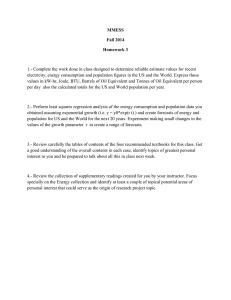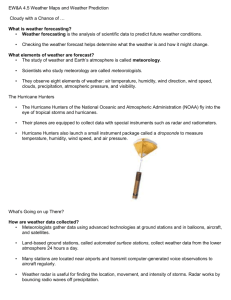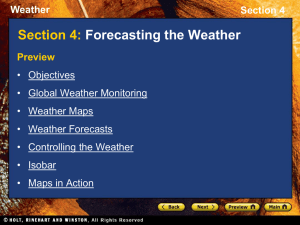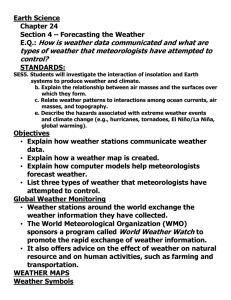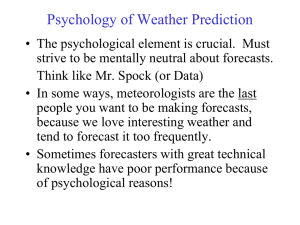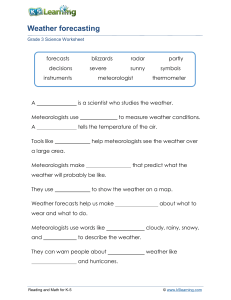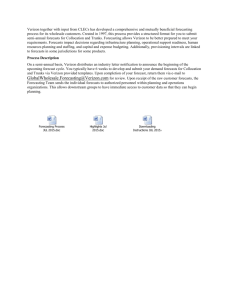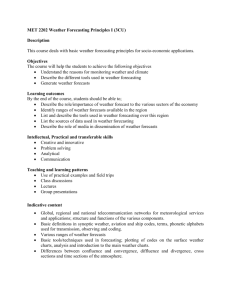Digging Deeper from Investigation 2
advertisement
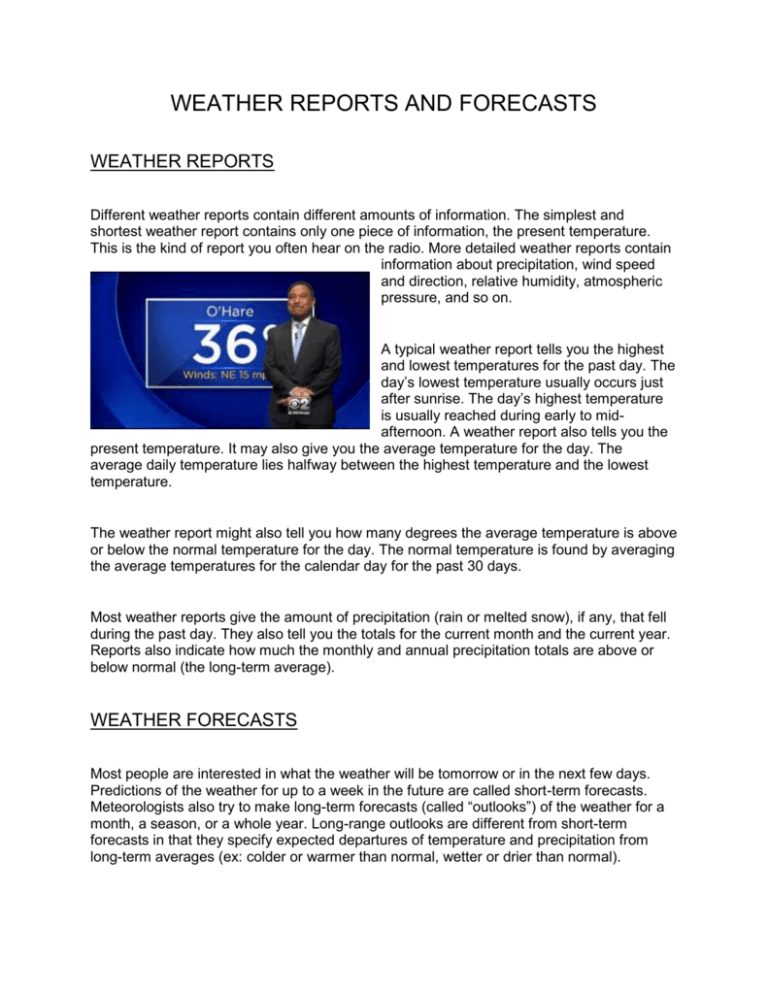
WEATHER REPORTS AND FORECASTS WEATHER REPORTS Different weather reports contain different amounts of information. The simplest and shortest weather report contains only one piece of information, the present temperature. This is the kind of report you often hear on the radio. More detailed weather reports contain information about precipitation, wind speed and direction, relative humidity, atmospheric pressure, and so on. A typical weather report tells you the highest and lowest temperatures for the past day. The day’s lowest temperature usually occurs just after sunrise. The day’s highest temperature is usually reached during early to midafternoon. A weather report also tells you the present temperature. It may also give you the average temperature for the day. The average daily temperature lies halfway between the highest temperature and the lowest temperature. The weather report might also tell you how many degrees the average temperature is above or below the normal temperature for the day. The normal temperature is found by averaging the average temperatures for the calendar day for the past 30 days. Most weather reports give the amount of precipitation (rain or melted snow), if any, that fell during the past day. They also tell you the totals for the current month and the current year. Reports also indicate how much the monthly and annual precipitation totals are above or below normal (the long-term average). WEATHER FORECASTS Most people are interested in what the weather will be tomorrow or in the next few days. Predictions of the weather for up to a week in the future are called short-term forecasts. Meteorologists also try to make long-term forecasts (called “outlooks”) of the weather for a month, a season, or a whole year. Long-range outlooks are different from short-term forecasts in that they specify expected departures of temperature and precipitation from long-term averages (ex: colder or warmer than normal, wetter or drier than normal). In earlier times, before invention of the telegraph and the telephone, weather observations from faraway place could not be collected in one place soon after they were made. In those times, the only way of predicting the weather was to use your local experience. Given the weather on a particular day, what kind of weather usually follows during the next day or two? As you can imagine, the success of such forecasting was not much better than making a random guess. Beginning in the 1870s, a national weather service used the telegraph to gather weather observations from weather stations located over large areas of the country. Simultaneous weather observations allowed meteorologists to plot weather maps and follow weather systems as they moved from place to place, greatly improving the accuracy of weather forecasts. Through the 20th century, meteorologists developed even better tools for observing and predicting the weather. As you will learn in the following investigations, special instruments measure weather in the atmosphere far above the ground. Satellites orbiting the Earth send back images of the weather over broad areas of the planet. In addition, computer models were developed for weather forecasting. The important processes operating in the Earth system that govern weather are built into a computer model. The model starts with the present weather and tries to simulate how the weather will evolve in the future. These computer models are run on supercomputers. They can handle enormous amounts of observational data and make billions of calculations quickly. Today’s computer models do a very good job of predicting the weather for the next few days. You know, however, that sometimes the forecast is wrong! The science of weather forecasting is still developing. Weather prediction will never be perfect. One reason the absence of reliable weather observation from large areas of the globe (especially the oceans). These observations are needed for computer models to accurately represent the present state of the atmosphere. A second reason is that even small changes in the weather in one place can cause much larger changes in weather elsewhere. The effects are small at first, but they become much greater. It’s very difficult for computers to simulate these interactions. Although forecasts will never be perfect, they will continue to improve in the years ahead. Through research, meteorologists learn more and more about the details of how weather in the Earth system works.
